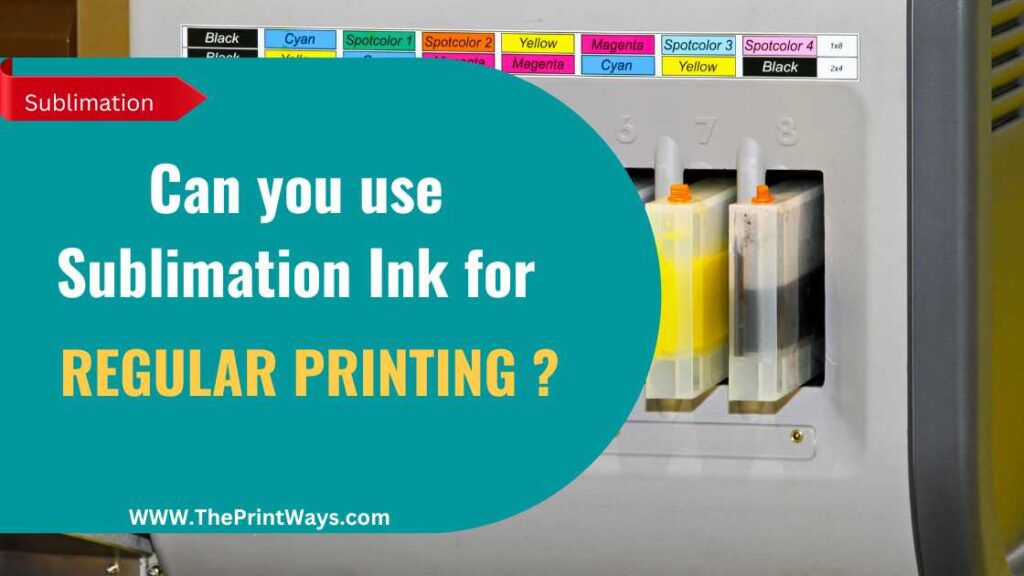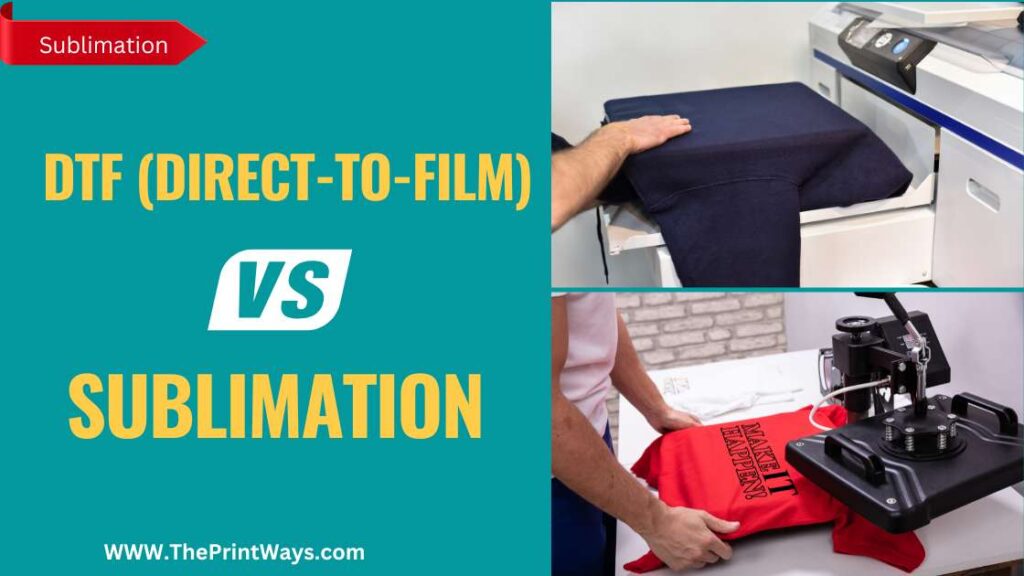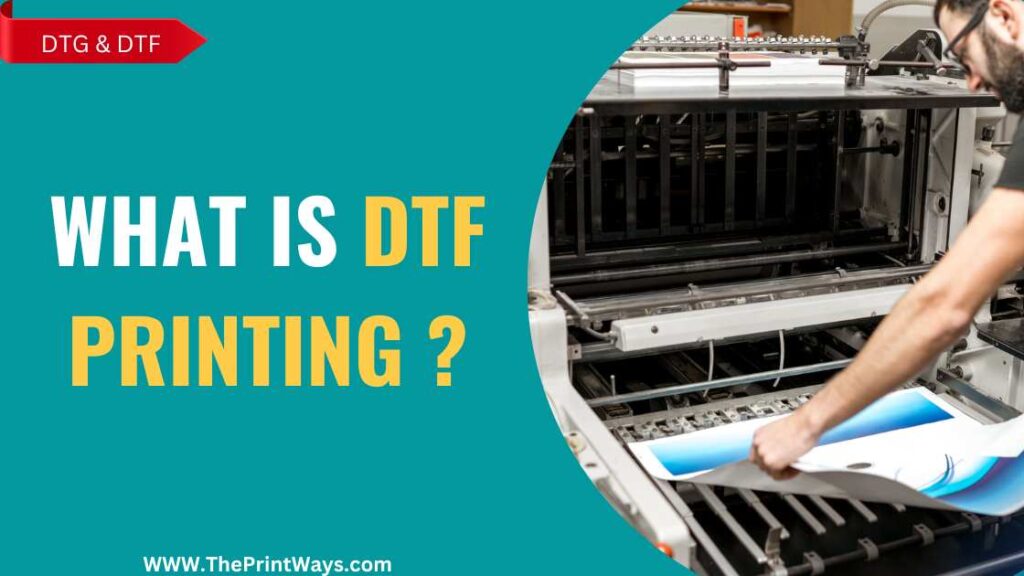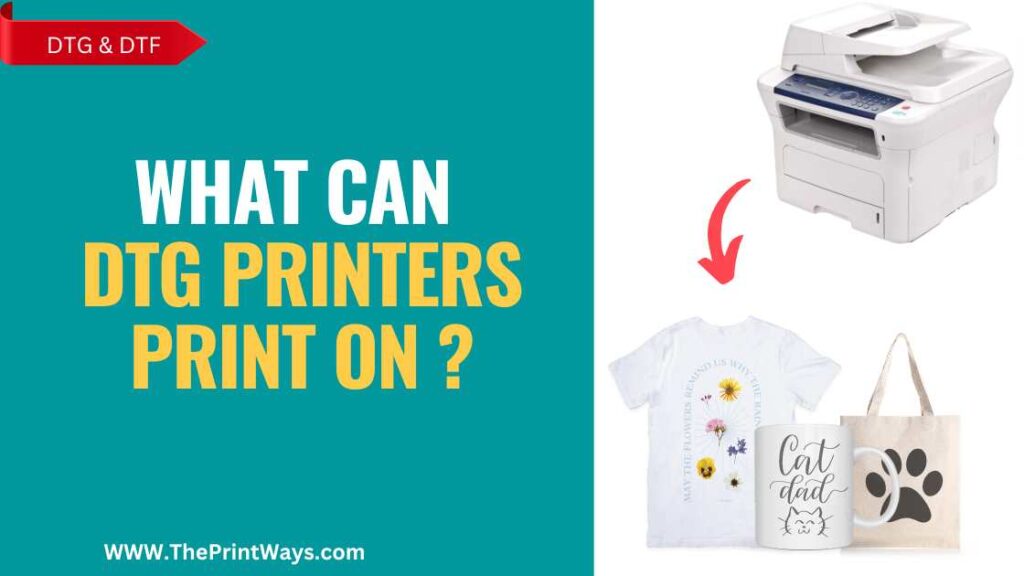Direct-to-Garment printing, often known as DTG printing, is a cutting-edge technique for imprinting images and text on textiles and apparel. Direct-to-garment (DTG) printing use a specialized printer to print the pattern directly onto the fabric, as opposed to more conventional processes like screen printing or heat transfer.
There are many benefits to using this method, one of which being the ability to create elaborate, colorful designs with great detail. This article will discuss direct-to-garment (DTG) printing, its operation, and its benefits and drawbacks. This post will provide an in-depth introduction to the world of DTG printing for anyone interested in fashion design, art, or even just the latest printing technology.
What is DTG printing?

Direct-to-garment (DTG) printing entails employing specialized inkjet printers to print high-quality graphics directly onto fabric. Water-based inks are used in these printers, and they are absorbed by the fabric fibers to create patterns that are both colorful and durable. Printing on fabric is quite similar to printing on paper, except that a special printer is required to accommodate the fabric’s weight and drape.
What is a DTG printer ?
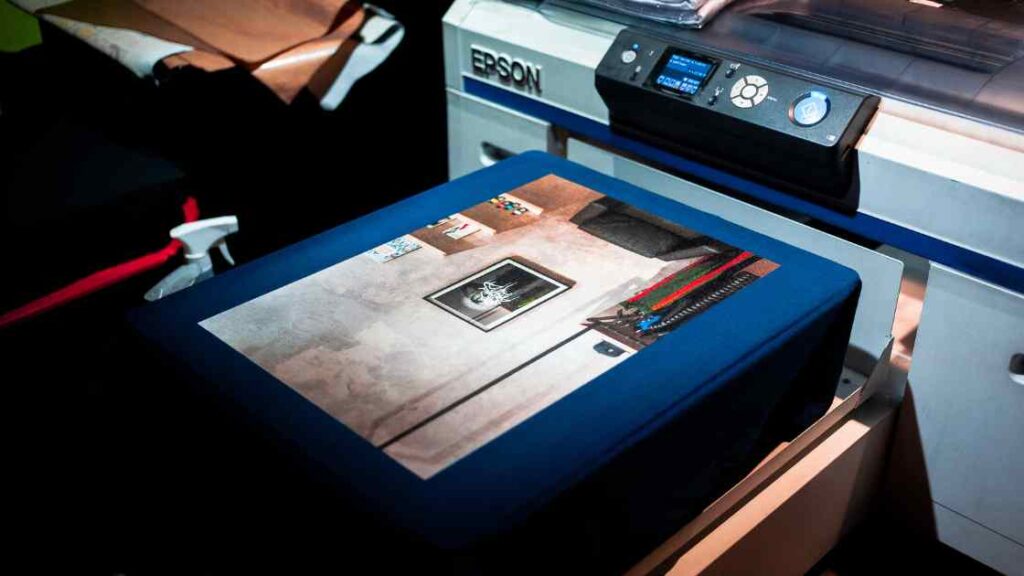
Direct-To-Garment printers (DTG printers) are a special kind of digital printer made for printing directly onto fabrics like t-shirts and sweatshirts. Direct-to-garment (DTG) printing eliminates the need for paper transfer or other intermediate steps by applying ink directly to the fabric.
DTG use specialized inkjet technology to produce vibrant, full-color graphics on textiles. By penetrating deep into the cloth, the ink produces a print that won’t fade, fracture, or peel. Direct-to-garment (DTG) printing is great for unique, one-of-a-kind designs, as well as small to medium-sized runs of personalized clothes.
How Does DTG printing work?
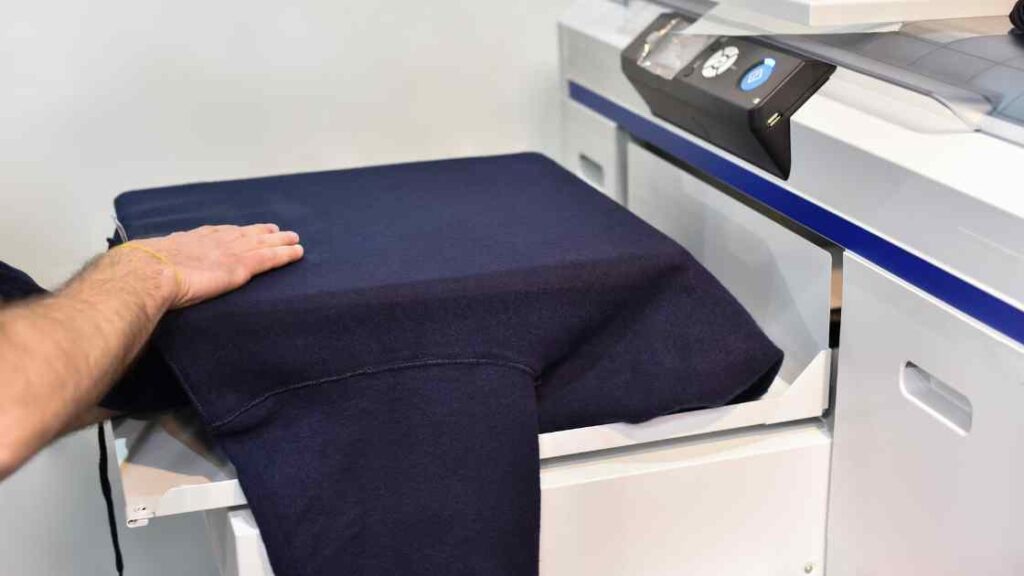
With a DTG printer, you can print your designs straight onto cloth. The fabric’s pattern is printed with a mix of white and colored inks. Initially, the fabric is put into the platen of the printer. The platen keeps the fabric in place to provide an exact print.
Here’s how it works:
- Design Preparation: First, the design is prepared using specialized DTG software. The design is uploaded to the DTG printer.
- Pre-treatment: The fabric is pretreated with a solution that helps the ink adhere to the fibers of the fabric.
- Printing: The fabric is loaded onto the DTG printer and the printer applies the ink directly onto the fabric using a series of print heads. The ink is absorbed into the fibers of the fabric and dries quickly.
- Curing: After printing, the fabric is then cured using a heat press or a dryer. This helps to set the ink and ensures that it won’t wash out or fade.
- Quality control: Finally, the printed fabric is inspected for quality control before it is shipped out.
DTG Vs Screen Printing: (Comparison)
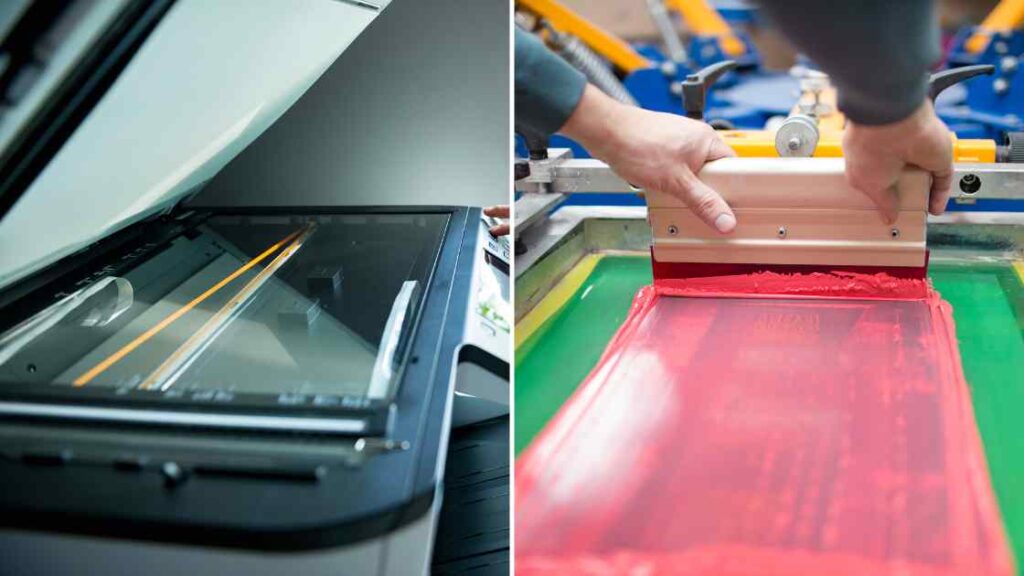
DTG (Direct-to-Garment) printing and screen printing are two of the most popular methods for printing designs onto garments or textiles. Both methods have benefits and drawbacks, and the choice of which to use ultimately depends on the requirements of the undertaking at hand.
Here is a comprehensive comparison of DTG and screen printing in all fields:
1. Setup Cost:
DTG printing requires a substantial investment in apparatus, including the DTG printer, heat press, and pre-treatment machine. In comparison to screen printing, which requires the cost of screens, emulsion, inks, and a screen printing equipment, this increases the cost of setup. Consequently, screen printing is the most cost-effective option.
2. Production Cost:
When producing larger quantities, DTG printing is typically more expensive than screen printing because the ink cost per garment is higher. In contrast, screen printing becomes more cost-effective as the number of shirts produced increases, as the pigment cost per shirt decreases. This means that DTG printing is more cost-effective for producing small quantities of t-shirts, whereas screen printing is more economical for producing large quantities.
3. Color Reproduction:
DTG printing is superior for printing full-color designs, such as gradients, shadows, and photographic images. This is due to the fact that DTG printers utilize a process similar to inkjet printing, which enables greater control over the color reproduction. Screen printing, on the other hand, is better adapted for designs with fewer colors due to the necessity of creating separate screens for each color.
4. Image Quality:
DTG printing provides a higher resolution and superior image quality than screen printing, particularly when it comes to fine details and small text. In contrast, screen printing can occasionally produce a slightly blurry or pixelated image, particularly when printing small details.
5. Fabric Compatibility:
DTG printing is compatible with a wider variety of fabrics, including cotton, polyester, and composites, without the need for specialized inks. Screen printing, on the other hand, necessitates distinct inks and processes for various types of fabrics, and some fabrics may not be compatible at all.
6. Speed of Production:
DTG printing is a faster process than screen printing for producing lesser quantities of t-shirts, as it does not require the time-consuming setup and clean-up steps that are required for screen printing. However, screen printing is quicker for larger quantities of shirts because multiple shirts can be printed simultaneously.
7. Durability:
Screen printing provides greater durability and longevity than DTG printing, particularly for printing on black fabrics. DTG ink tends to fade and fracture over time, whereas screen printing ink adheres more firmly to the fabric, resulting in a print that lasts longer.
8. Environmental Impact:
DTG printing is less harmful to the environment than screen printing because it produces less debris and requires less water and chemicals.
Overall, both DTG and screen printing have their own advantages and disadvantages, and the choice between the two ultimately depends on the requirements of the given project. DTG printing is more suitable for smaller quantities, full-color designs, and a broader variety of fabrics, whereas screen printing is more suitable for larger quantities, simple designs, and darker fabrics.
Advantages and Disadvantages of DTG Printing
| Advantages | Disadvantages |
|---|---|
| High-quality and detailed prints | Limited color gamut and fabric options |
| Suitable for small batch printing | Expensive initial investment and maintenance |
| Quick turnaround time | Print durability issues on some fabrics |
| No minimum order quantity required | Not suitable for large scale production |
| Environmentally friendly | Requires skilled operators for optimal results |
How Long Does a DTG print Last?
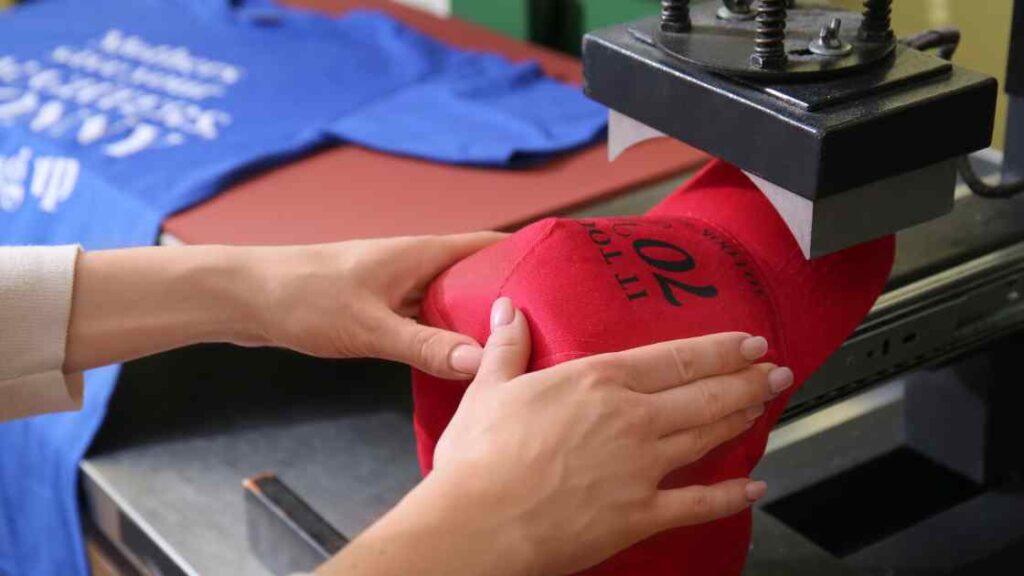
With appropriate care, a DTG print can typically last for several years. Nevertheless, the precise durability of a DTG print can vary based on the factors mentioned above.
If a high-quality, long-lasting ink is used and the garment is thoroughly laundered and dried, the print can last for many years without fading or cracking. Conversely, if low-quality ink is used, or if the garment is laundered with harsh detergents or dried at high temperatures, the print may fade or crack much more quickly.
Can DTG printing be done on dark fabrics?
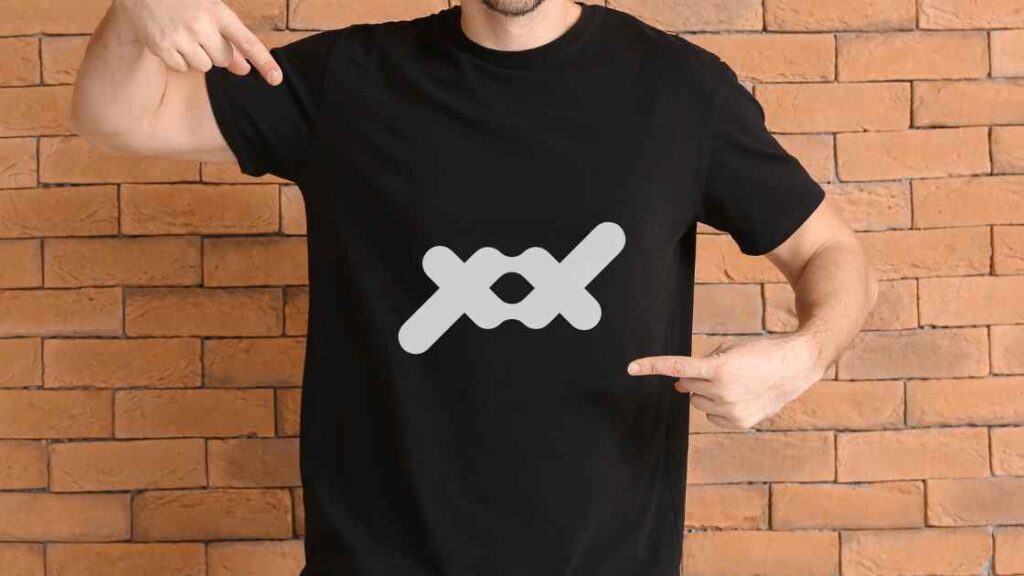
Yes, DTG (Direct-to-Garment) printing on dark fabrics is possible. However, the procedure and outcomes may differ when printing on dark fabrics.
Typically, when printing on dark fabrics, a white underbase layer is printed first to ensure that colors appear accurate and vibrant. This underbase layer serves as a foundation for the hues that will be printed on top, making them stand out against the dark fabric.
Additionally, printing on dark fabrics may necessitate a longer drying time and additional ink to accomplish the desired results. In addition, it is essential to ensure that the pigment used is designed specifically for printing on dark fabrics.
What are the common issues with DTG printing?
However, as with any printing technique, it is susceptible to its own set of printing-related complications. Some of the most typical DTG printing issues include:
- Ink bleeding: Ink bleeding occurs when the ink from the design travels across the fabric, resulting in blurred edges and loss of detail.
- White ink opacity:White ink is frequently used as a base layer for printing on colored fabrics; however, it can be challenging to achieve an opaque white coating, which can result in a washed-out appearance.
- Ink clogging: The print nozzles of DTG printers can become clogged with ink, leading to an uneven distribution of ink and poor print quality.
- Fabric preparation: Before printing, the fabric must be appropriately pretreated to ensure that the pigment adheres effectively. If the fabric is not pre-treated adequately, the ink may not bind properly, and the design may fade or wash out.
- Design quality:The quality of the design itself can have an effect on the print quality. Low-resolution images or designs with an excessive number of minute details may not translate well to DTG printing.
- Color matching: DTG printing can struggle with accurate color matching, particularly when printing on various types of fabric.
- Printing on dark fabrics: Printing on dark fabrics necessitates a white underbase layer, which may cause ink saturation and clogging issues.
Frequently Asked Questions
Q: What kind of fabrics can be printed with DTG printing?
DTG printing works well on a broad variety of materials, from cotton and polyester to mixes and even some varieties of silk and wool. Keep in mind that not all textiles are created equal and may need additional steps taken before printing.
Q: How much does DTG printing cost?
DTG printing costs vary according to factors such as the type and quality of ink used, the complexity of the design, the type of garment being printed on, and the number of prints required. For smaller orders, DTG printing is often more expensive than standard screen printing, but it can be more cost-effective for bigger orders with many colors or complicated designs.
Conclusion
To summarize, DTG printing is a digital printing process that enables for the direct printing of high-quality, full-color graphics onto a range of materials. DTG printing has been a popular choice for personalized garments and items due to its ability to produce detailed graphics fast and affordably. However, it is crucial to note that DTG printing has limitations, and while selecting this printing method, considerations such as fabric type, design complexity, and durability should be carefully considered.


